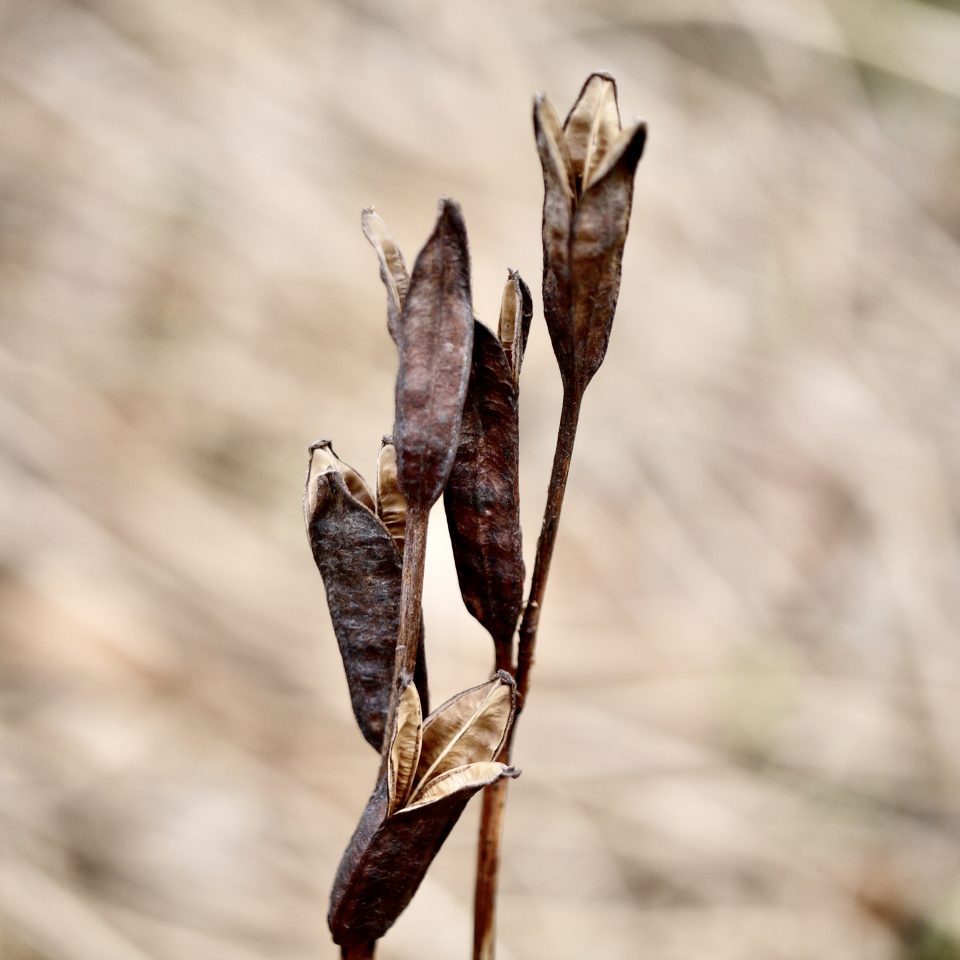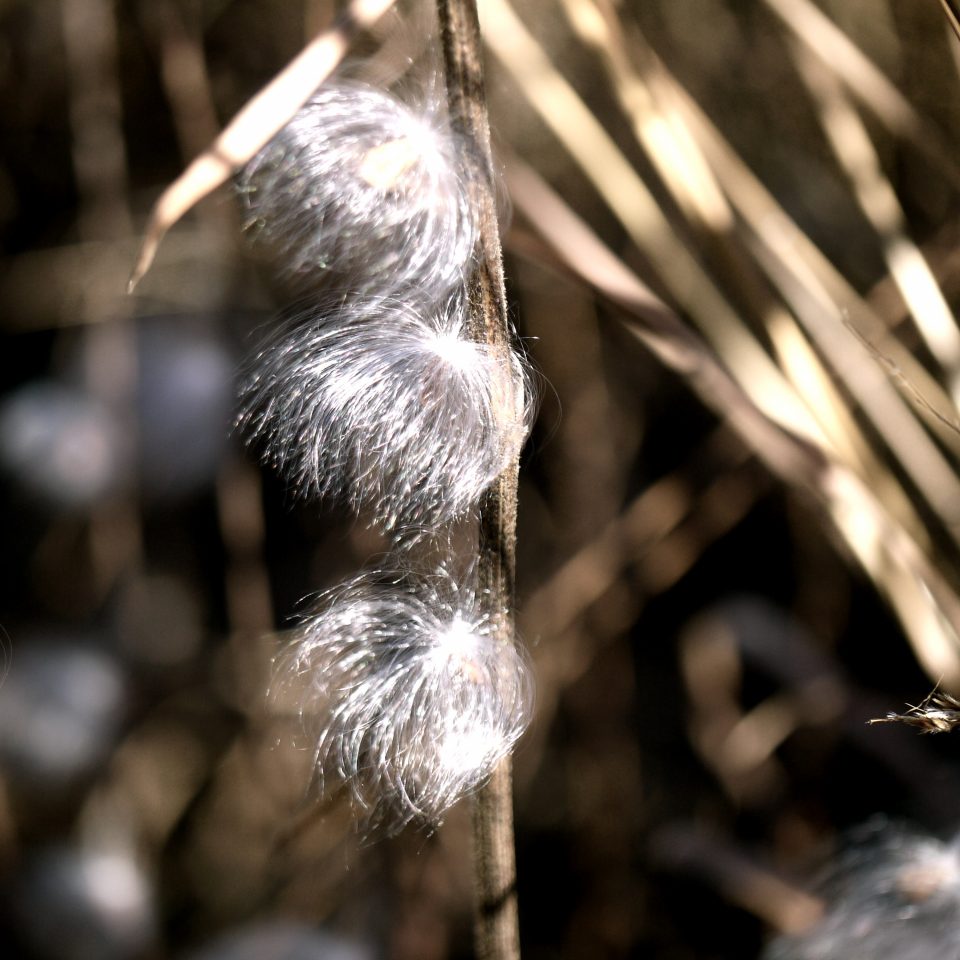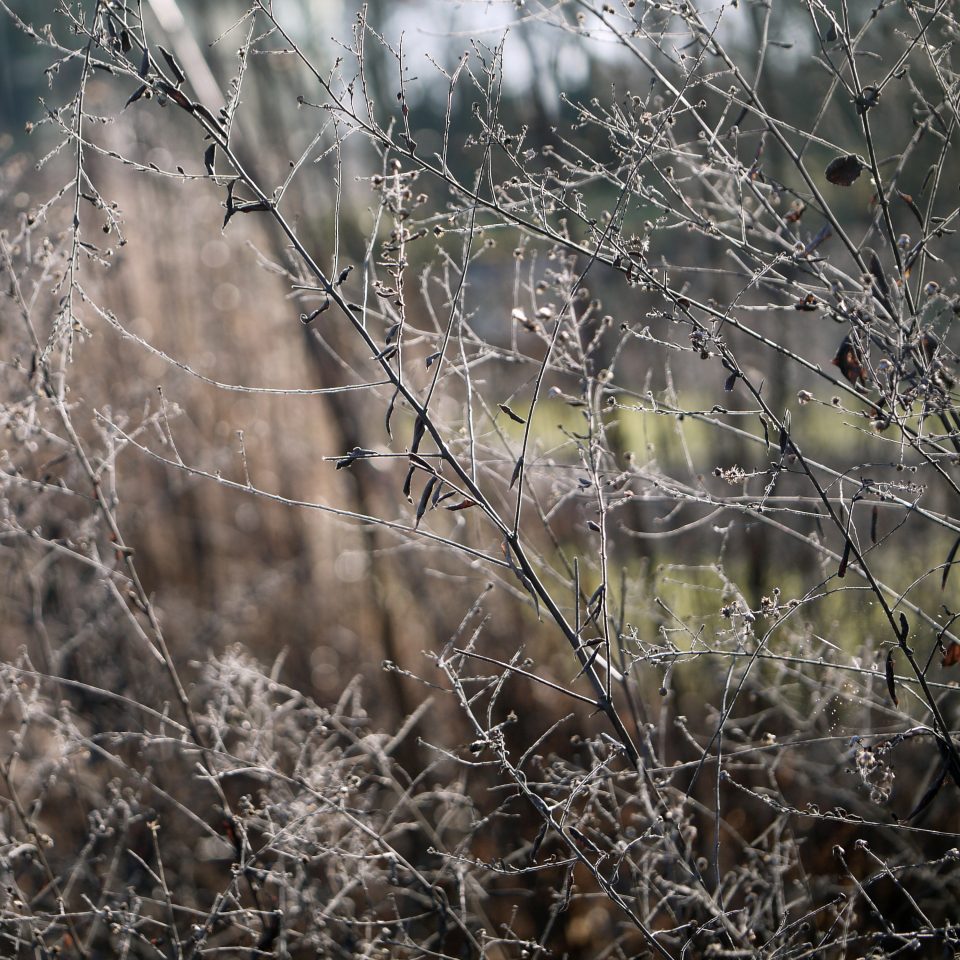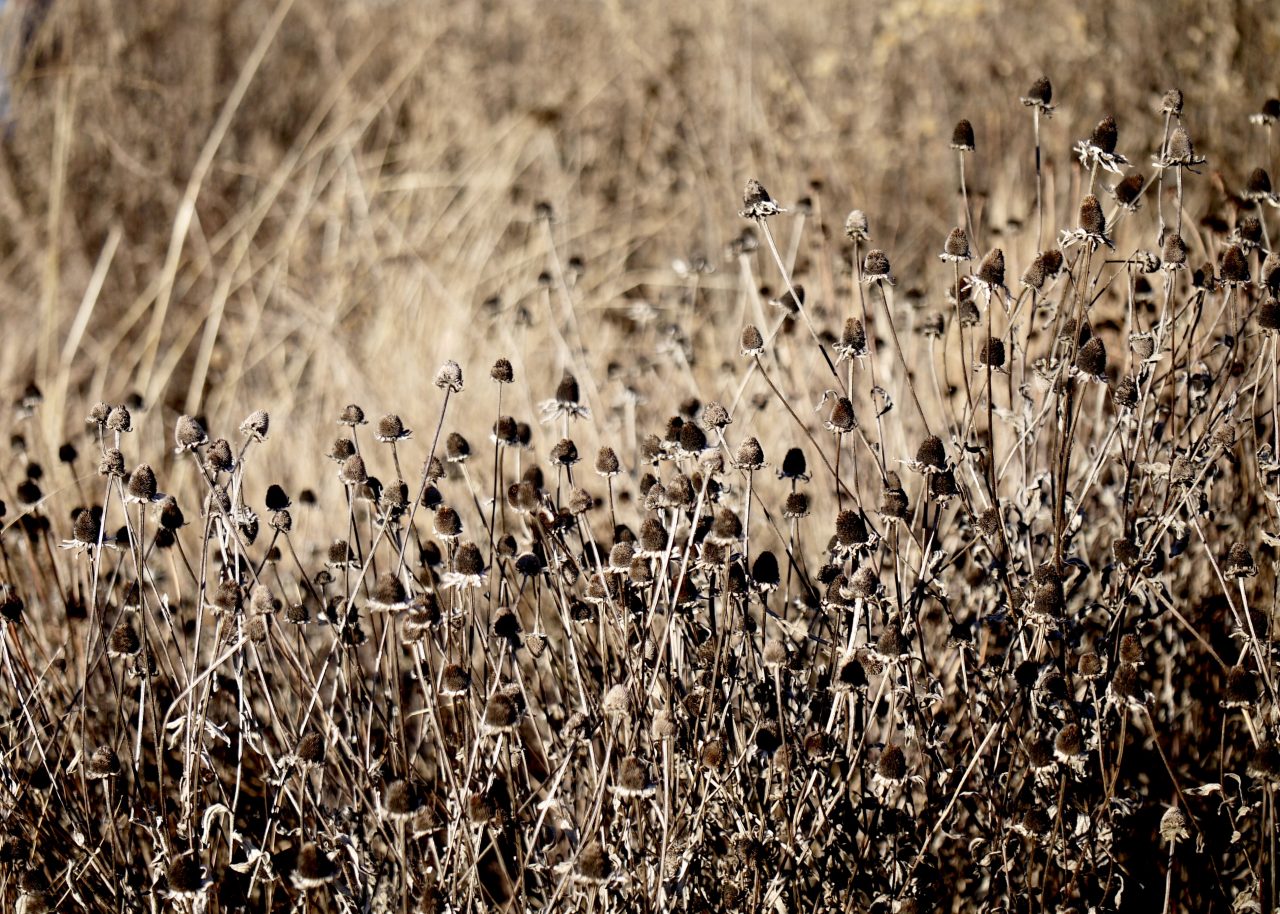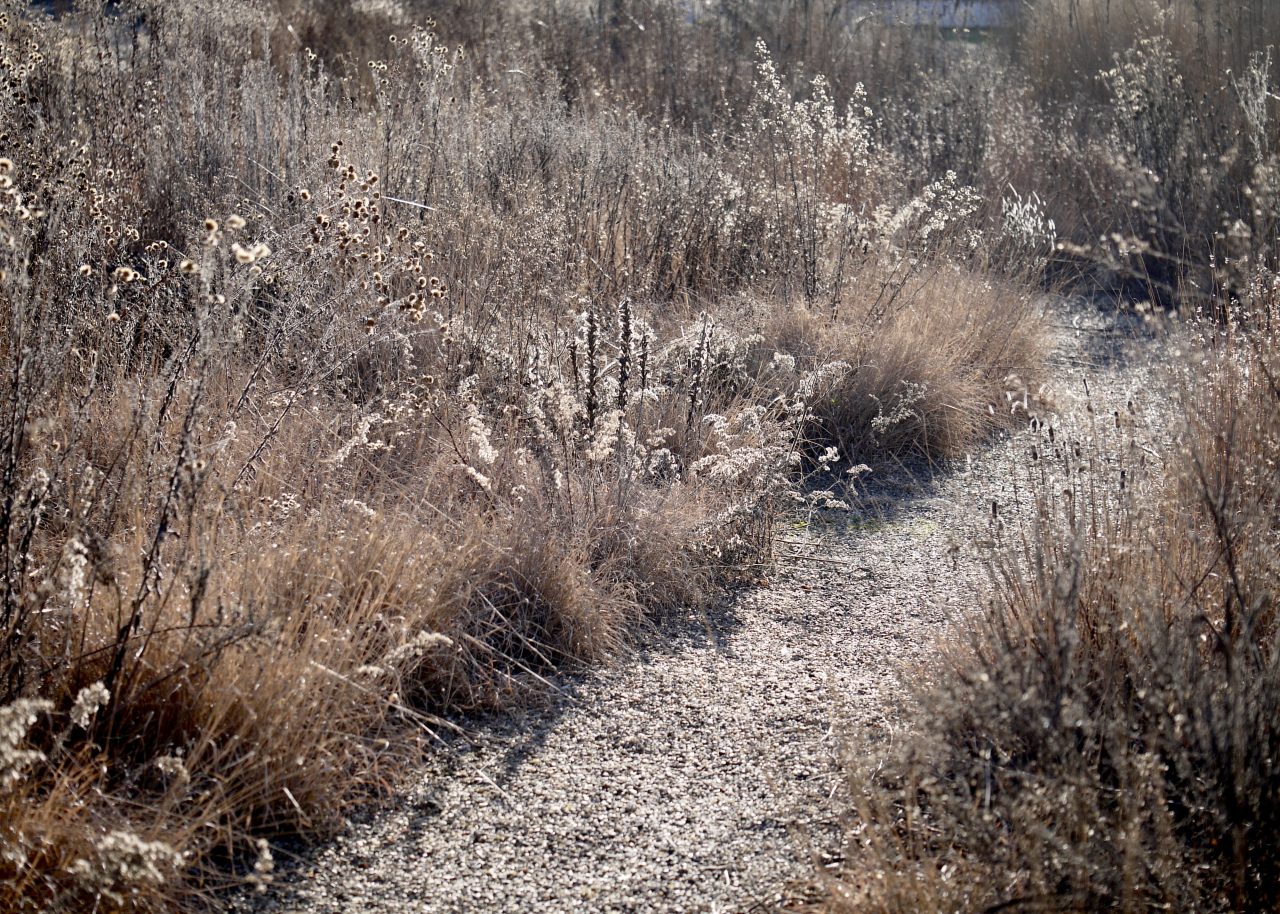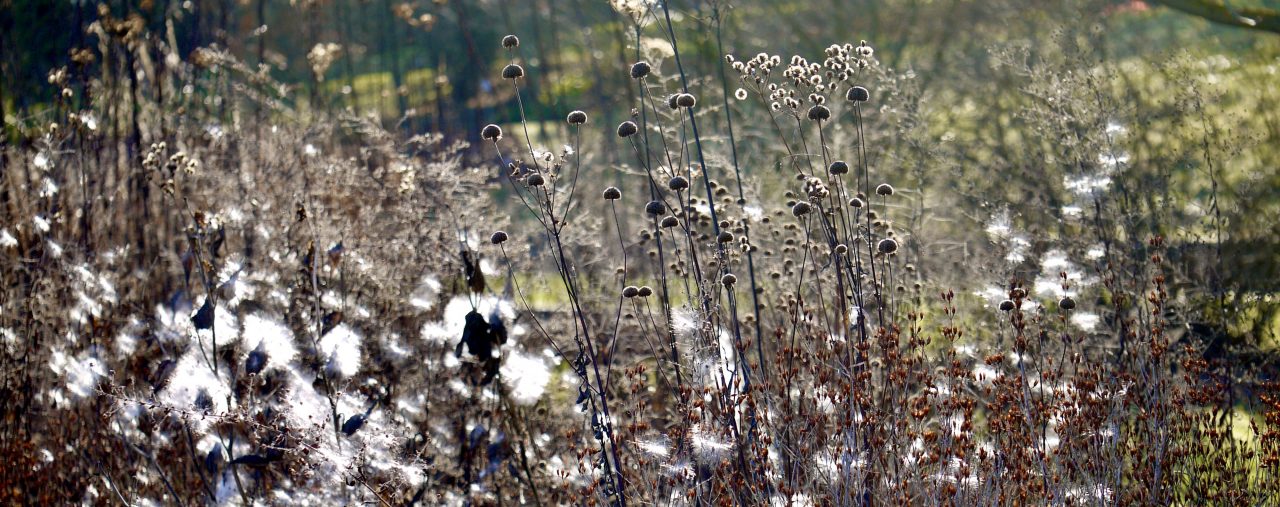
Tidy. It’s a word which has crept from the home into the garden with such subtlety that we scarcely think about it, but a word which can deny your garden of up to 6 months interest as we ease into winter.
Tidy is perhaps a state of mind. If a garden is always the halfway point between what you intended to happen and what actually happened, then tidy represents where the two meet as a moment of trepidation rather than excitement. How do you experience that loss of control?
It can manifest itself as a contradiction. There is a fear amongst many new gardeners of everything disappearing in the winter months; a fear which drives a desire for evergreen everything as a means to control the seasons. The tidy mind. But actually, by letting go of that desire, you instantly gain the potential for a winter season every bit as beautiful as the garden in full flower, even when the flowers are long since past. By choosing deciduous plants which die elegantly, the garden isn’t bare in winter at all.
Being untidy in winter offers an array of advantages – and massively expands your planting options if you’re scared of things being bare. Allowing plants to fade naturally in the garden gives you textural interest for months after the flower’s “peak” and that cover also provides a safe habitat for wildlife – insects in particular, but also birds, frogs, and hedgehogs.
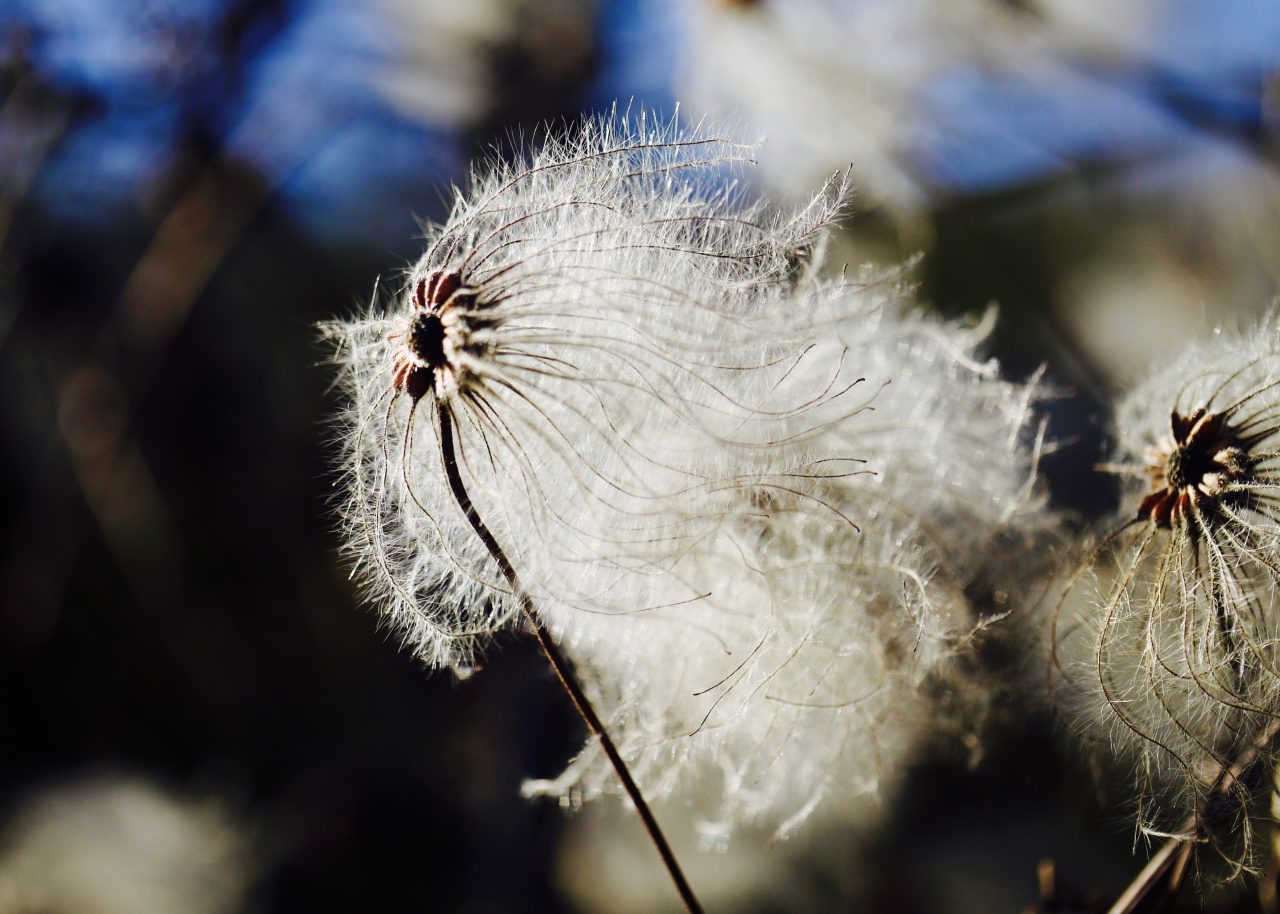
Clematis seed head
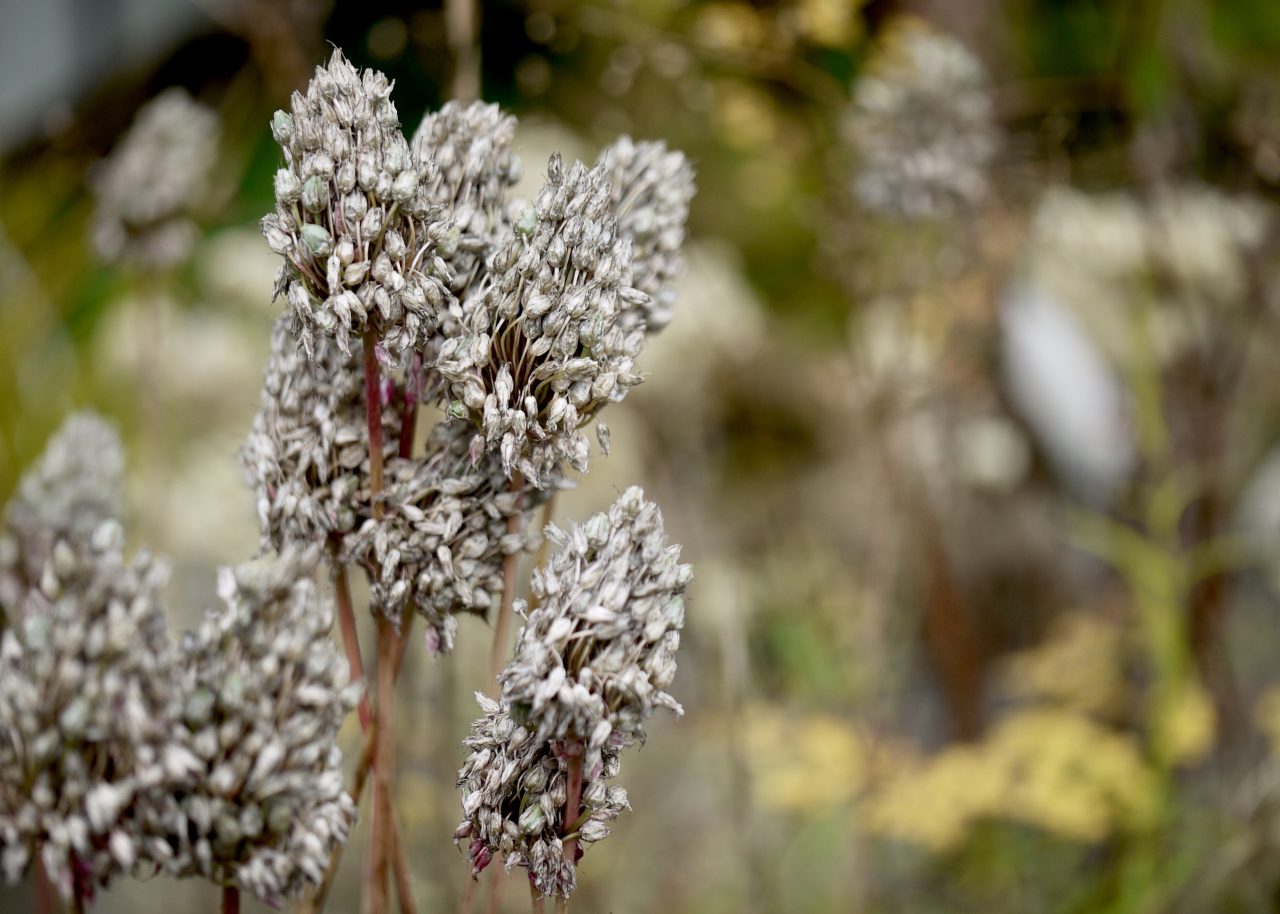
Allium sphaerocephalon
Planting for seed heads can start early. The woolly seed heads of Clematis make a beautiful backdrop to the summer season. Allium heads can be left all year in the garden, and some early- and mid-summer flowering perennials such as Agastache, Phlomis, and Eryngium, Monarda, Agapanthus, and Phlox, or cool-season grasses like Calamagrostis ‘Karl Foerster’ and C. ‘Avalanche’ look well as spent flowers even while other plants are still going.
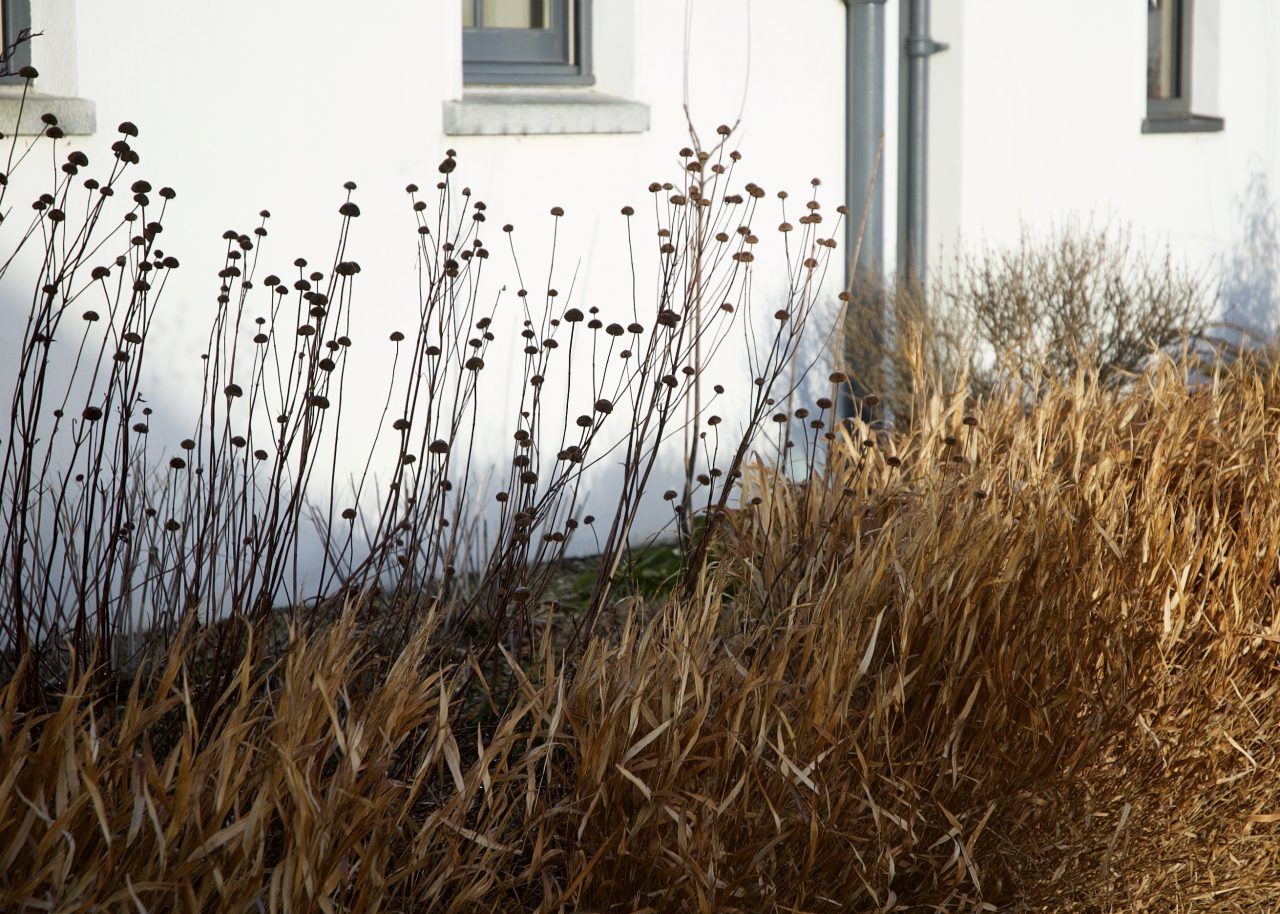
Phlomis russeliana
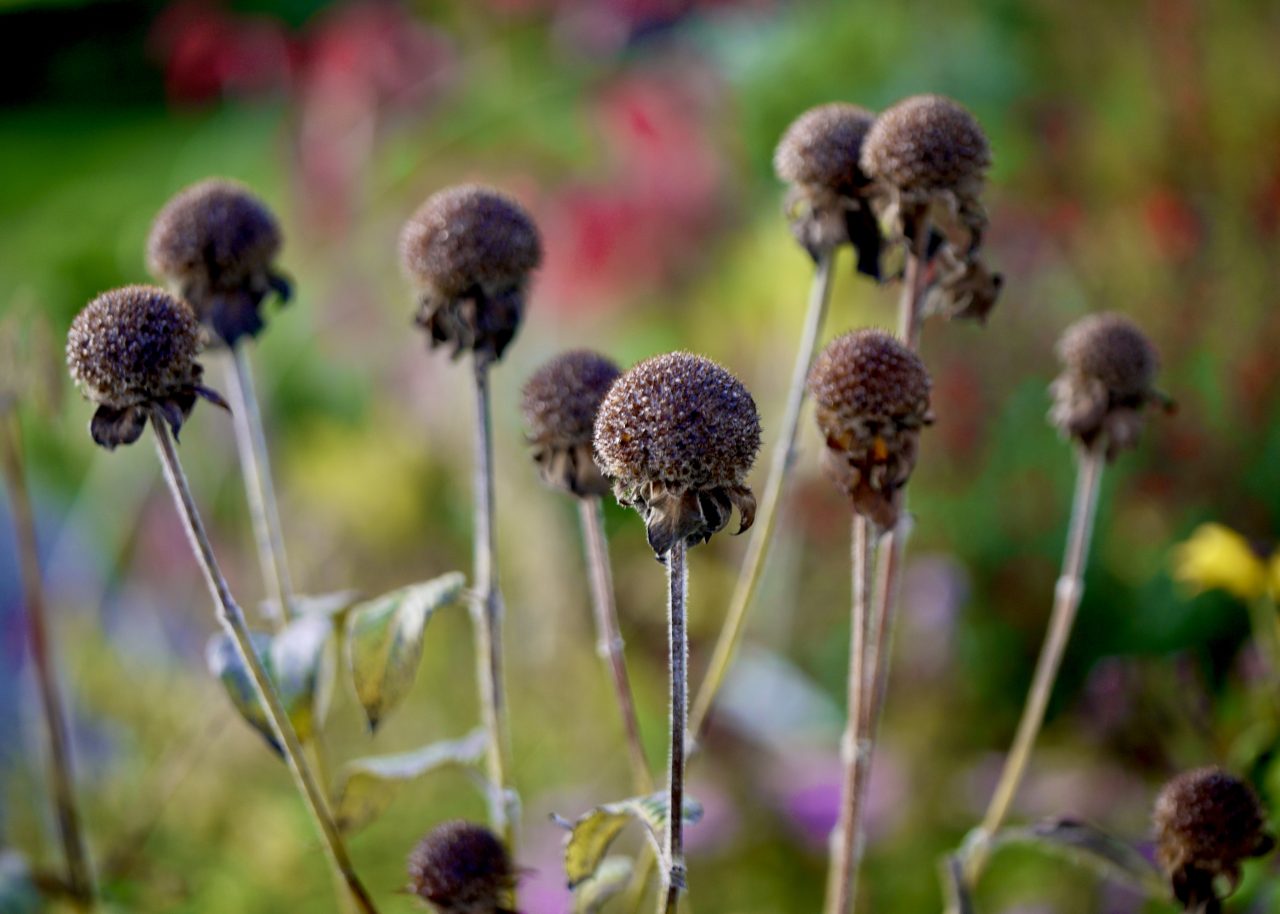
Monarda
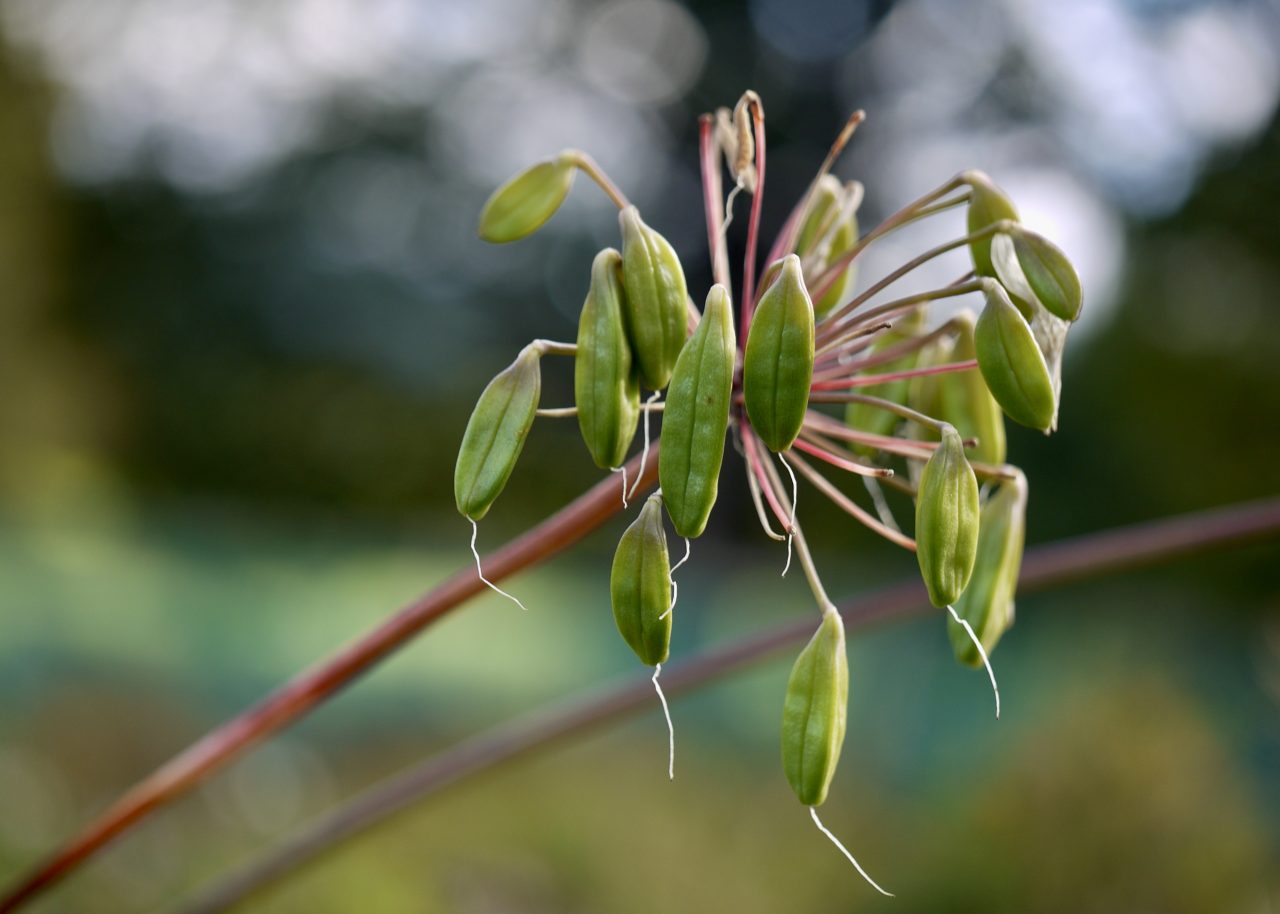
Agapanthus
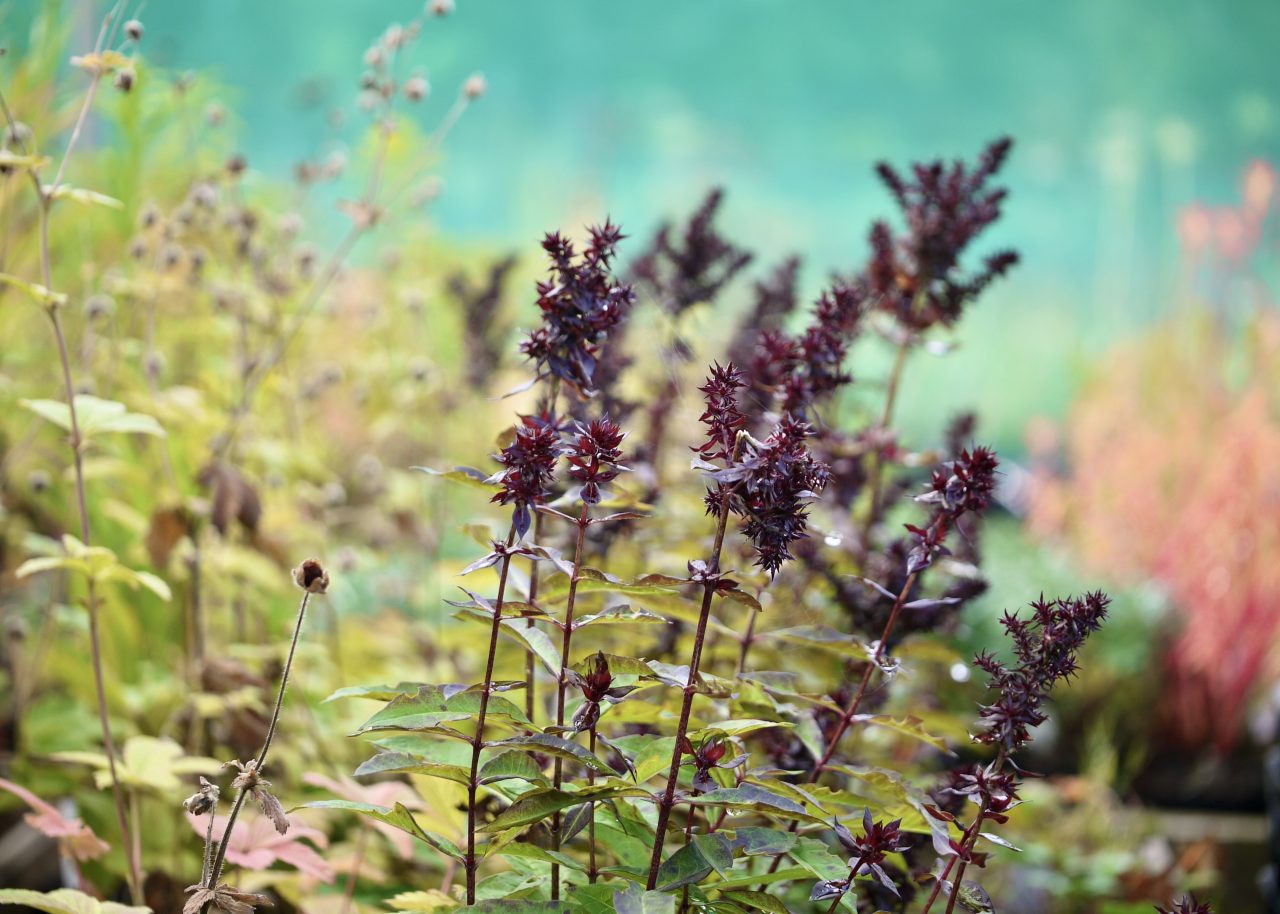
Phlox
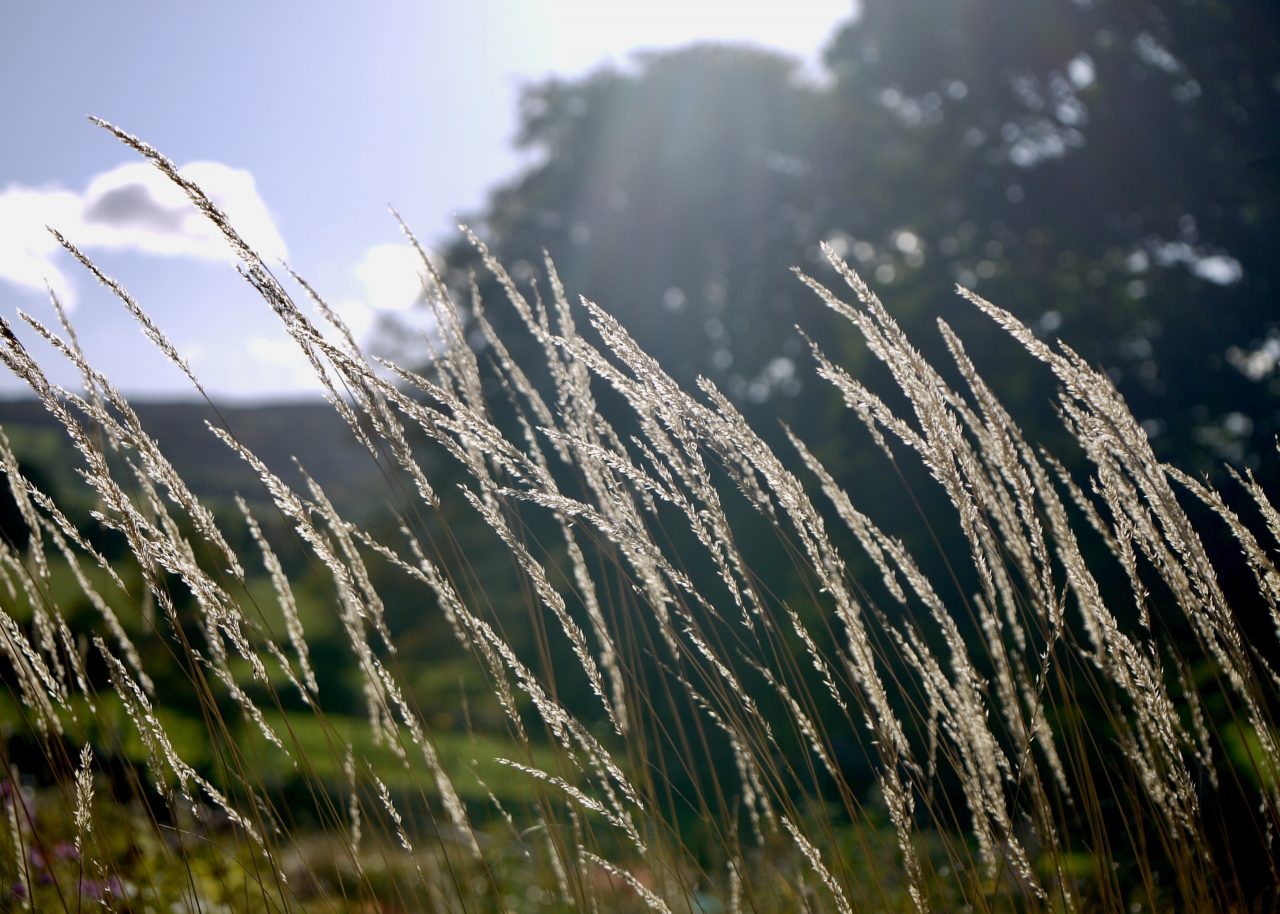
Calamagrostis Karl Foerster
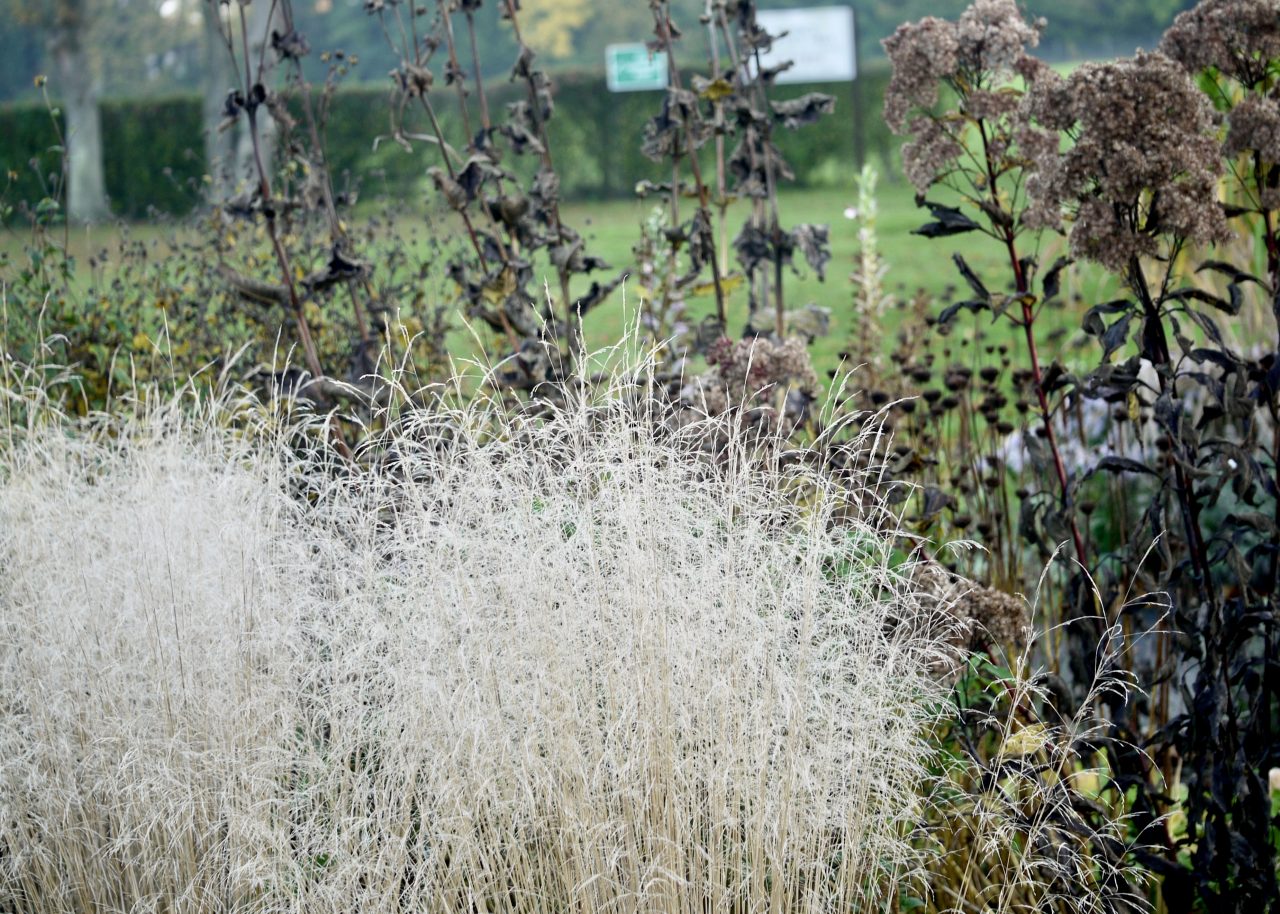
Deschampsia/Eupatorium
Dead-heading is a very effective way to prolong flowering of some plants, but there are others, especially later-flowering perennials, where leaving the spent flower heads in place is a preparation for your winter garden, and they are best left alone. Echinacea‘s large daisy flowers are a magnet for pollinators in late summer, but there are few greater joys than watching finches shimmy their way up the stems to eat the seeds in late Autumn. The same approach is taken with Rudbeckia, Helianthus, and Helenium varieties. We get to enjoy the whole palette of intensive pastel colours in all shades as they slowly transform into more monochrome while the last bit of sap bleeds out.
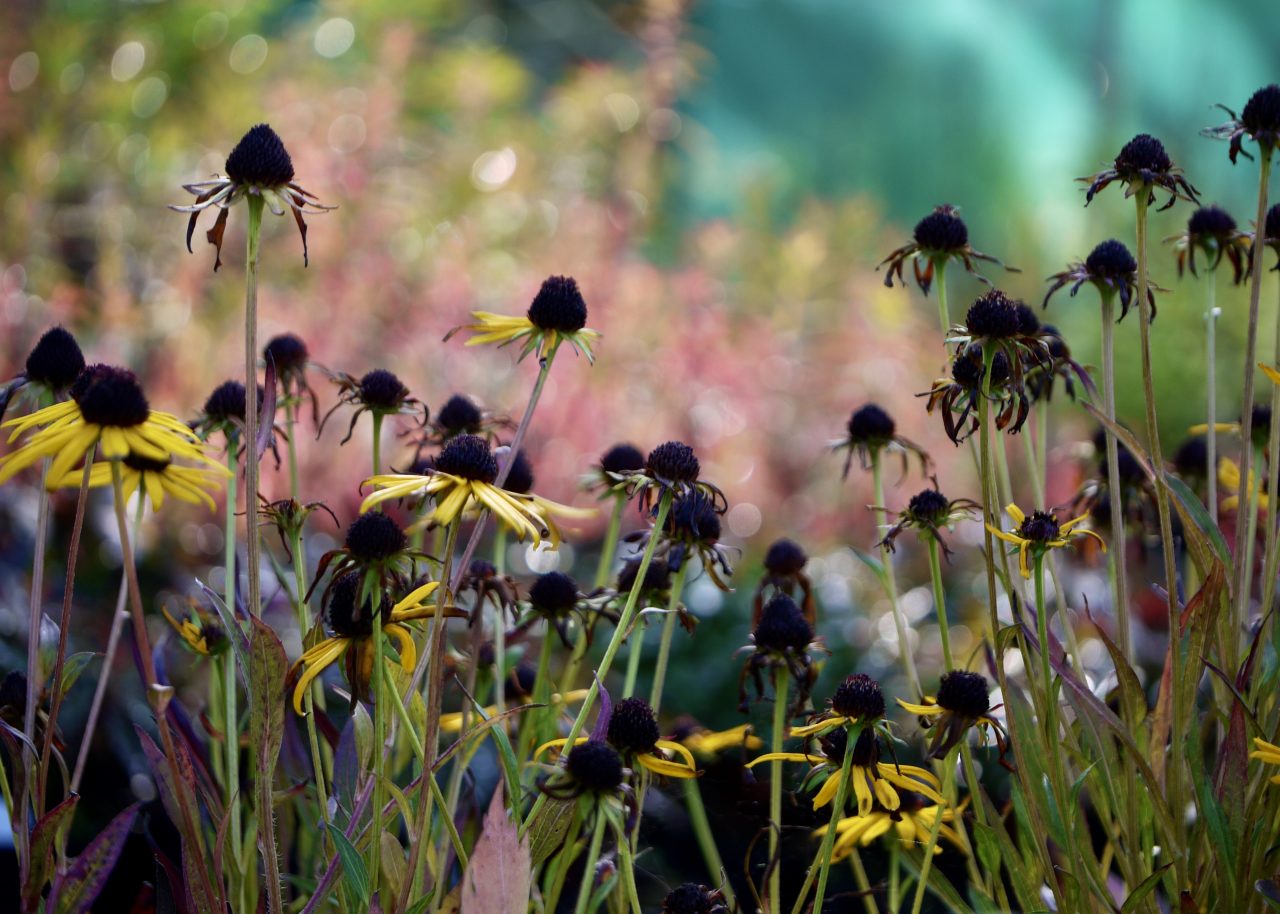
Rudbeckia fulgida var. deamii
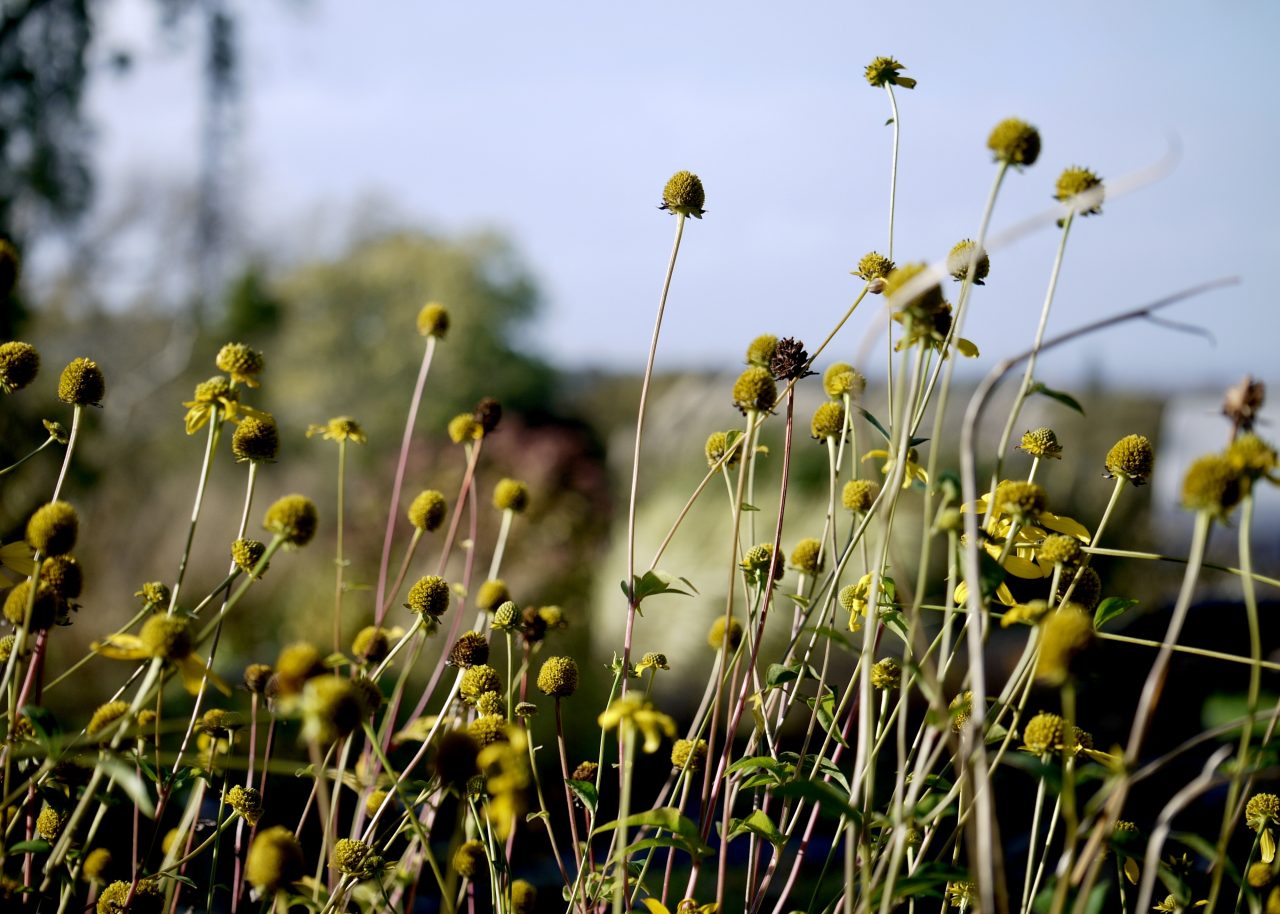
Rudbeckia laciniata var. humilis
Just today someone mentioned the plants succumbing to Autumn and was surprised by my replying, “Isn’t it wonderful?!” I take just as much pleasure in the garden falling apart into winter – “the slow crash” as I call it – as the garden establishing itself in spring. The seed heads lose their colour, turning black, as the foliage of the grasses turns golden yellow, and the trees above scarlet. Eventually, you have a black and white garden of dark seed heads on bare stems amongst buff grasses. If black and white sounds stark, you only have to see it early on a winter;s morning as the low sun picks up the frost and cobwebs like jewels.
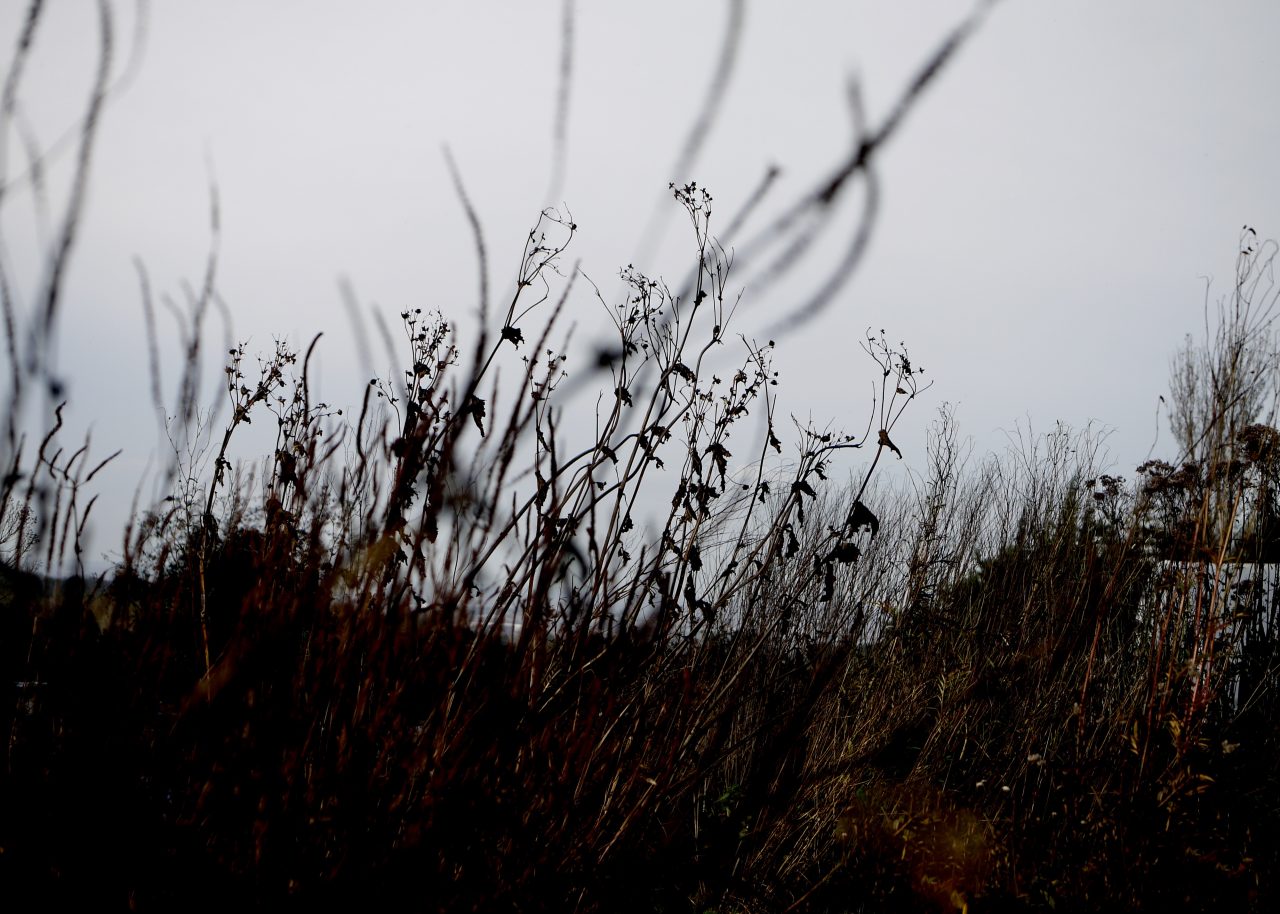
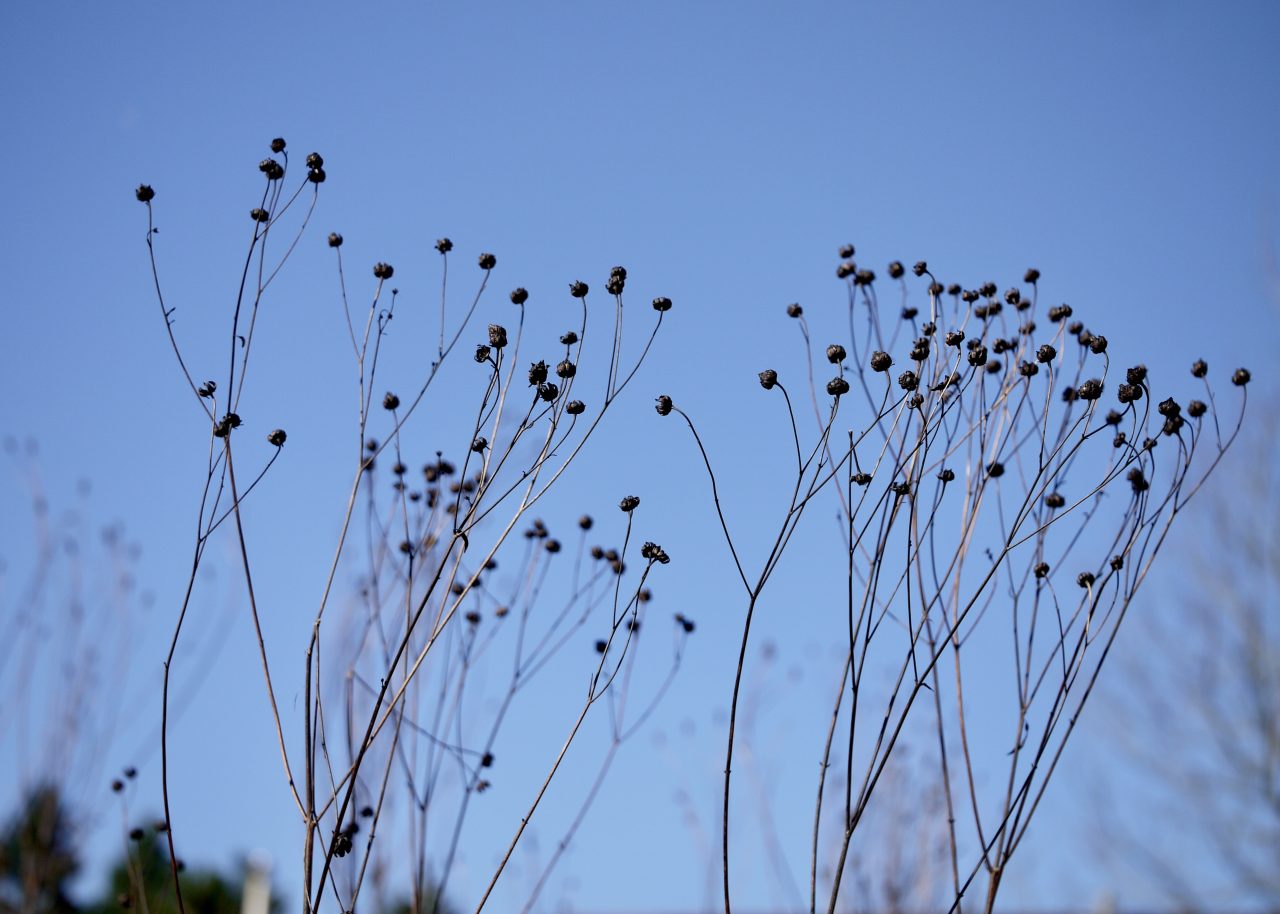
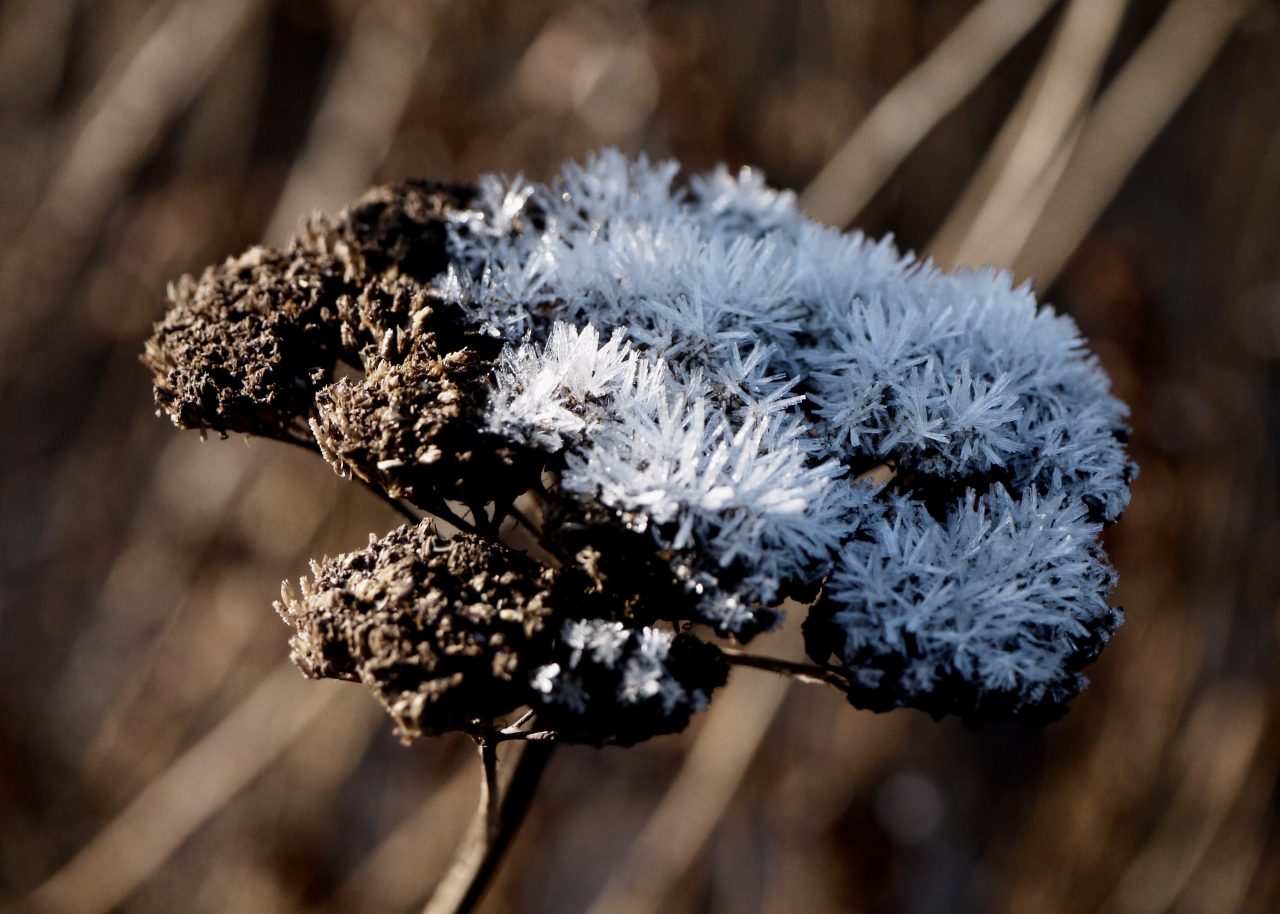
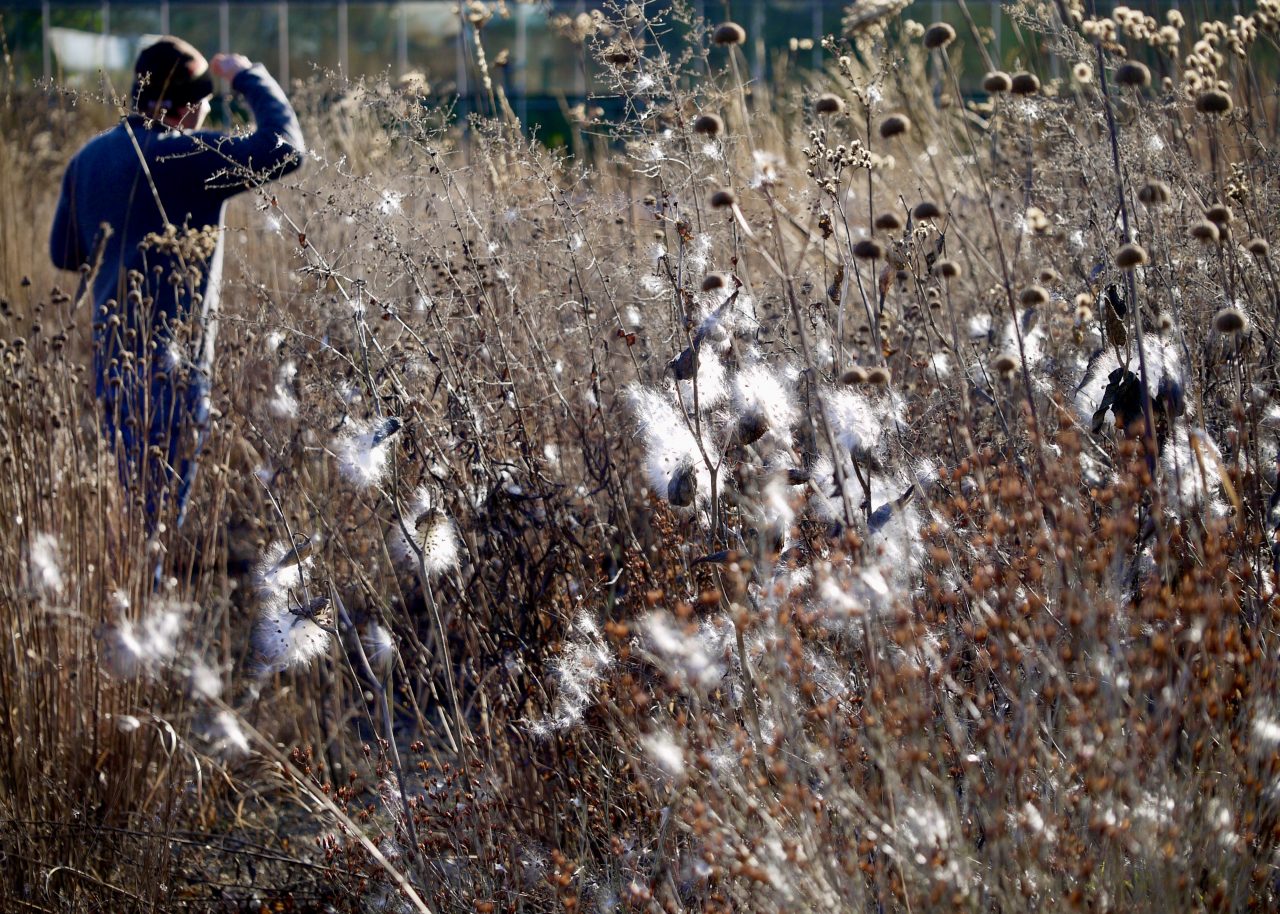
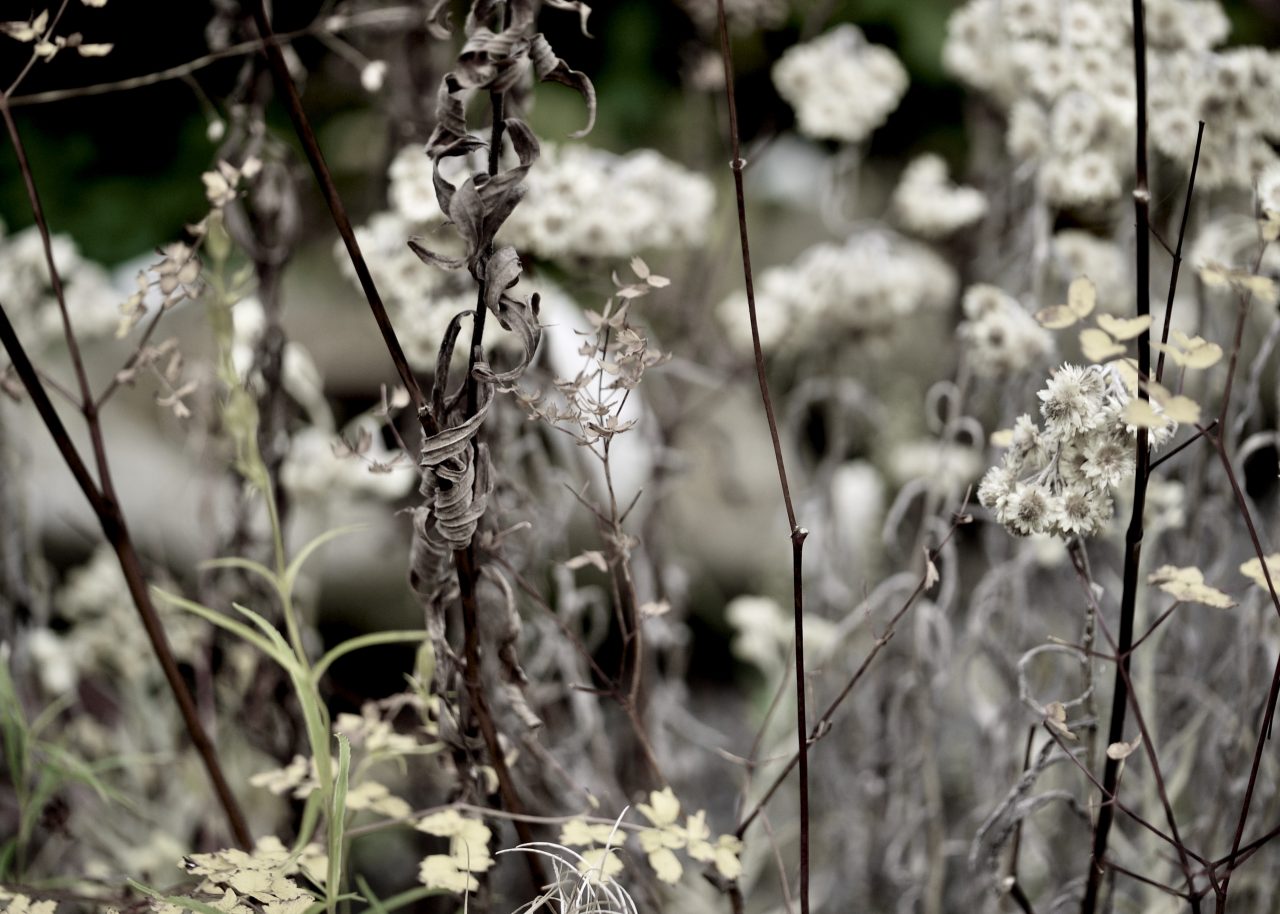
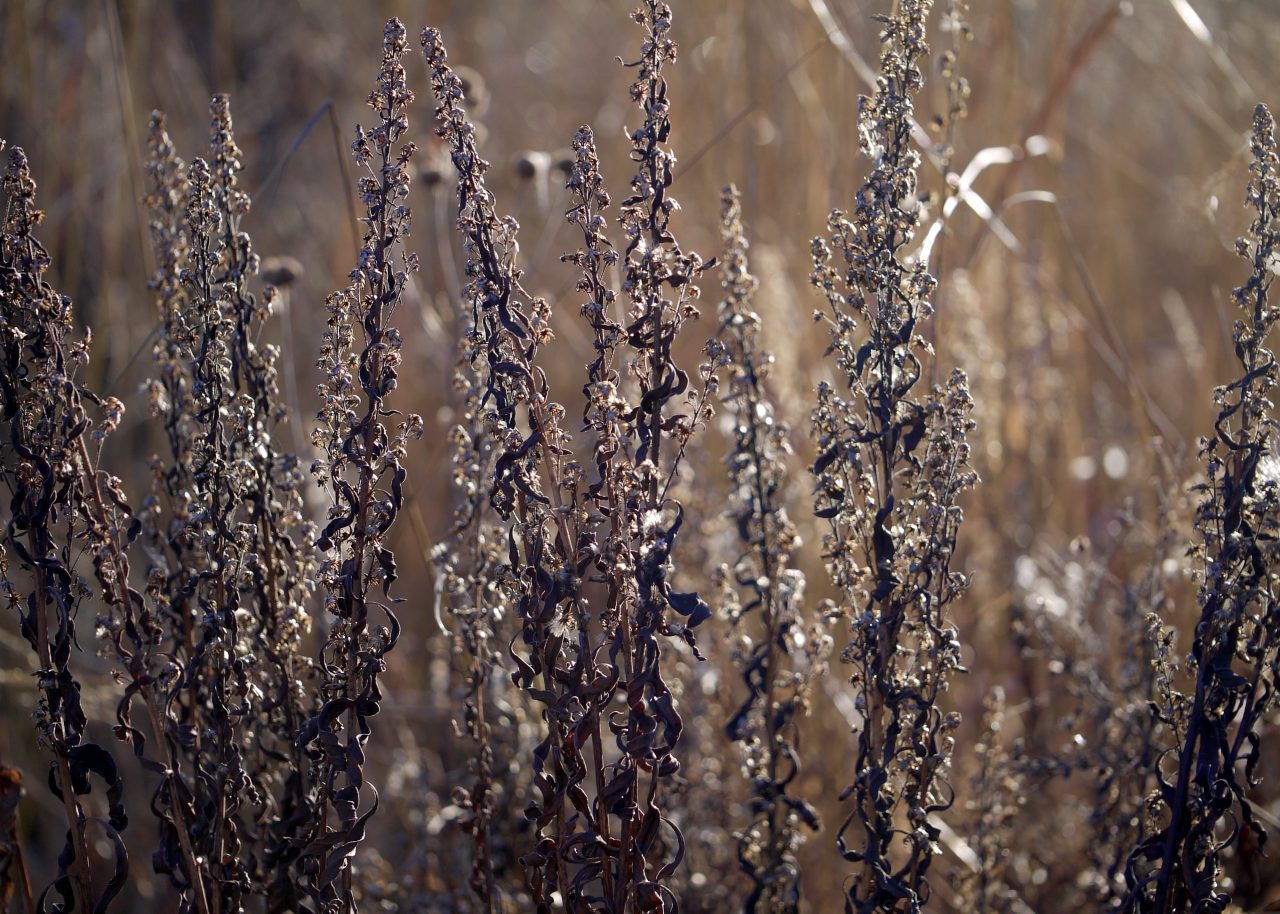
Asters don’t start flowering until September and their blues, purples, and whites, look beautiful against the yellowing foliage of perennials which have already finished. Their miniature dandelion seed heads in turn look well against the skeletonized forms of late-flowering grasses like Miscanthus. The umbel heads of Selinum wallichianum, and tiny flowers of Patrinia scabiosifolia, Filipendula, and Eupatorium also look great in winter, and the translucent seed pods of perennial honesty, Lunaria rediviva, glimmer in the low sun. Hylotelephium (Sedum), and the floating bottle-brush flowers of Sanguisorba are also an excellent choice for winter contrast.
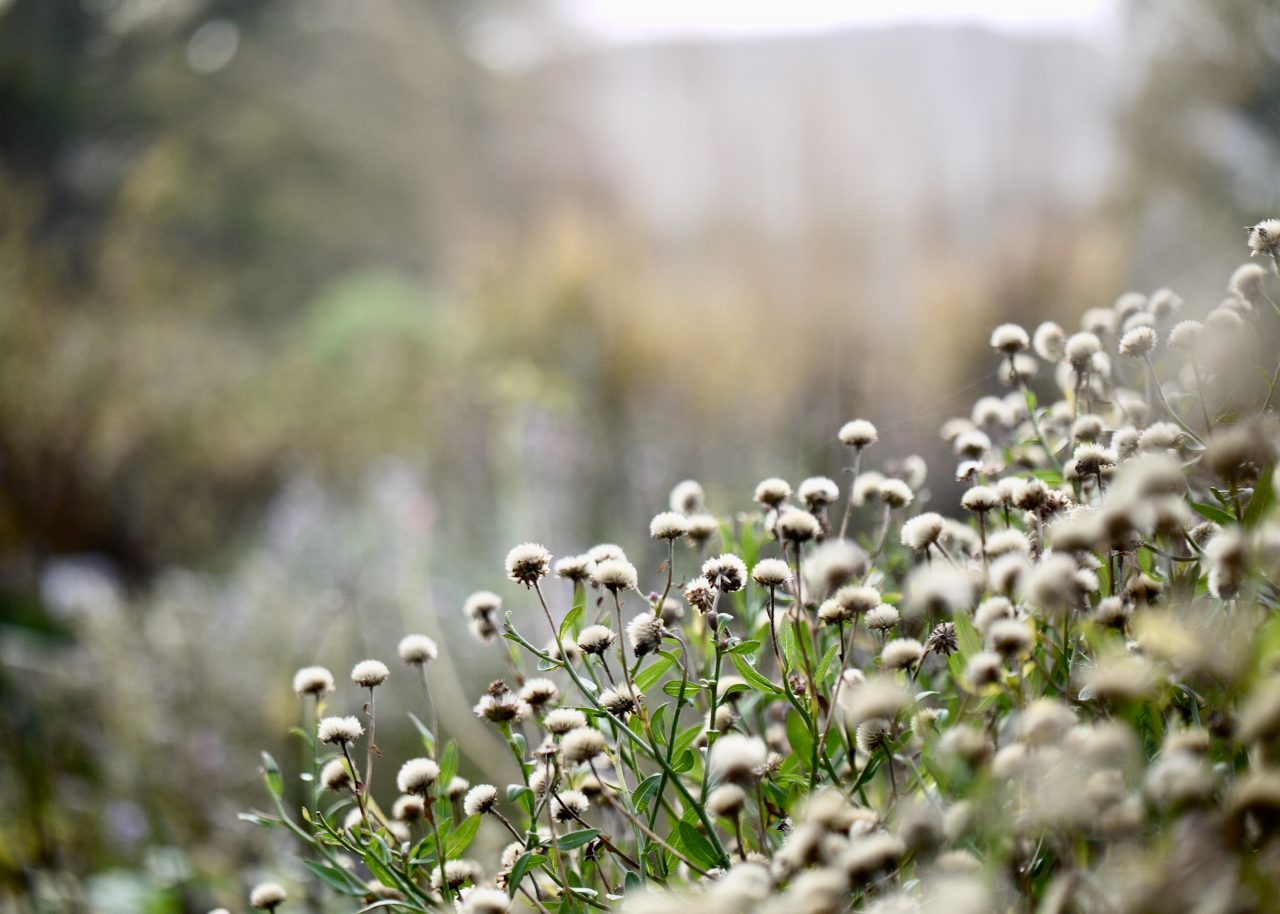
Aster
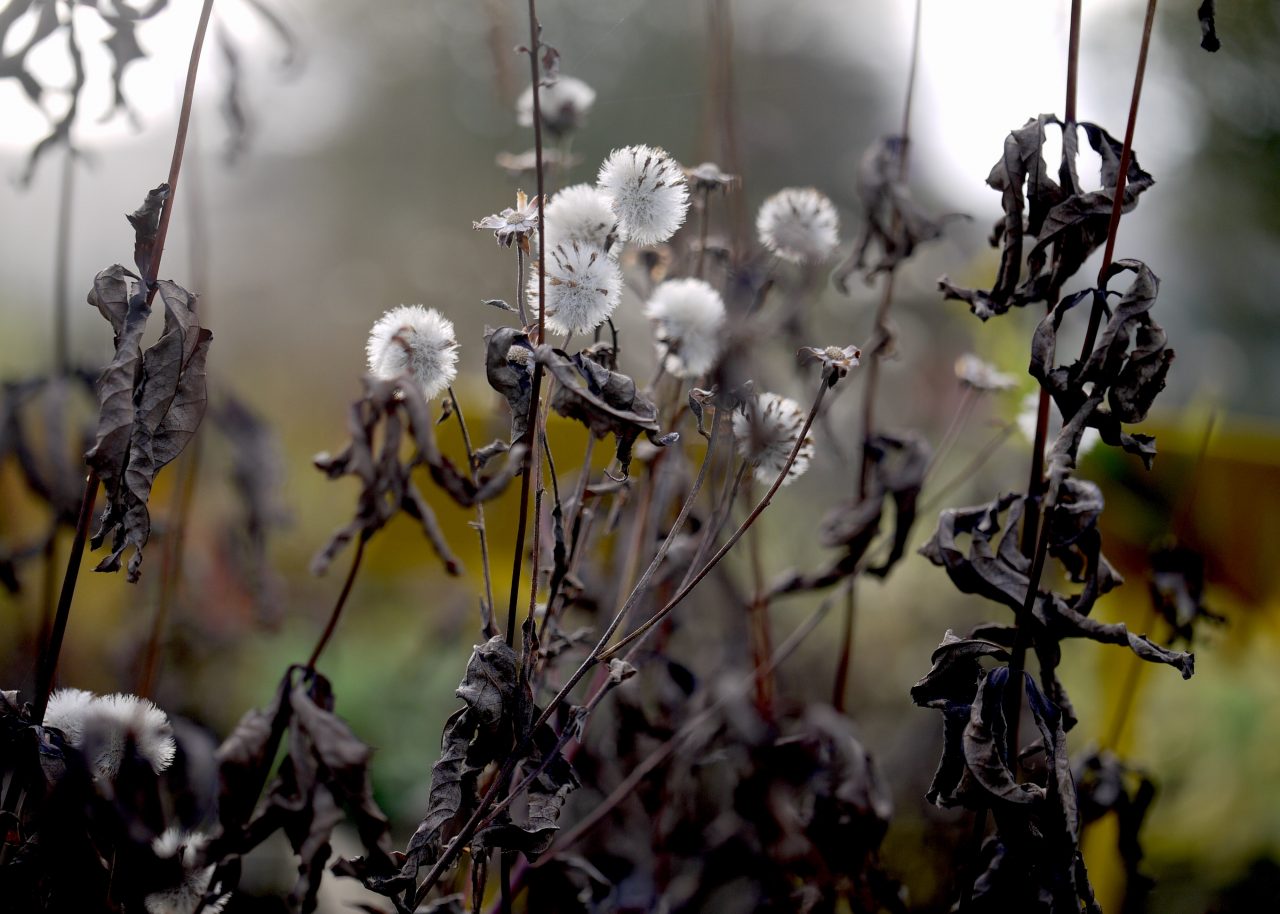
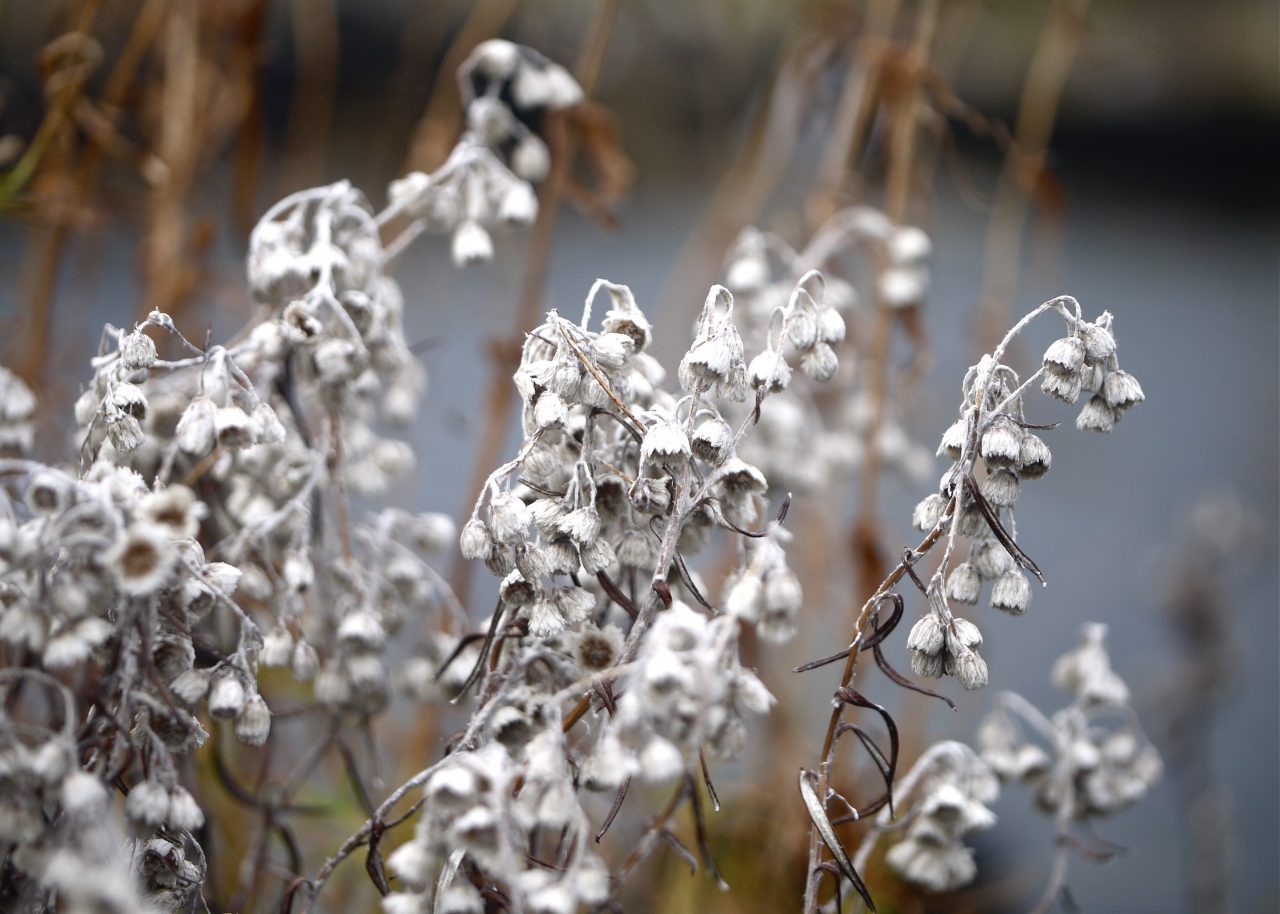
Anaphalis
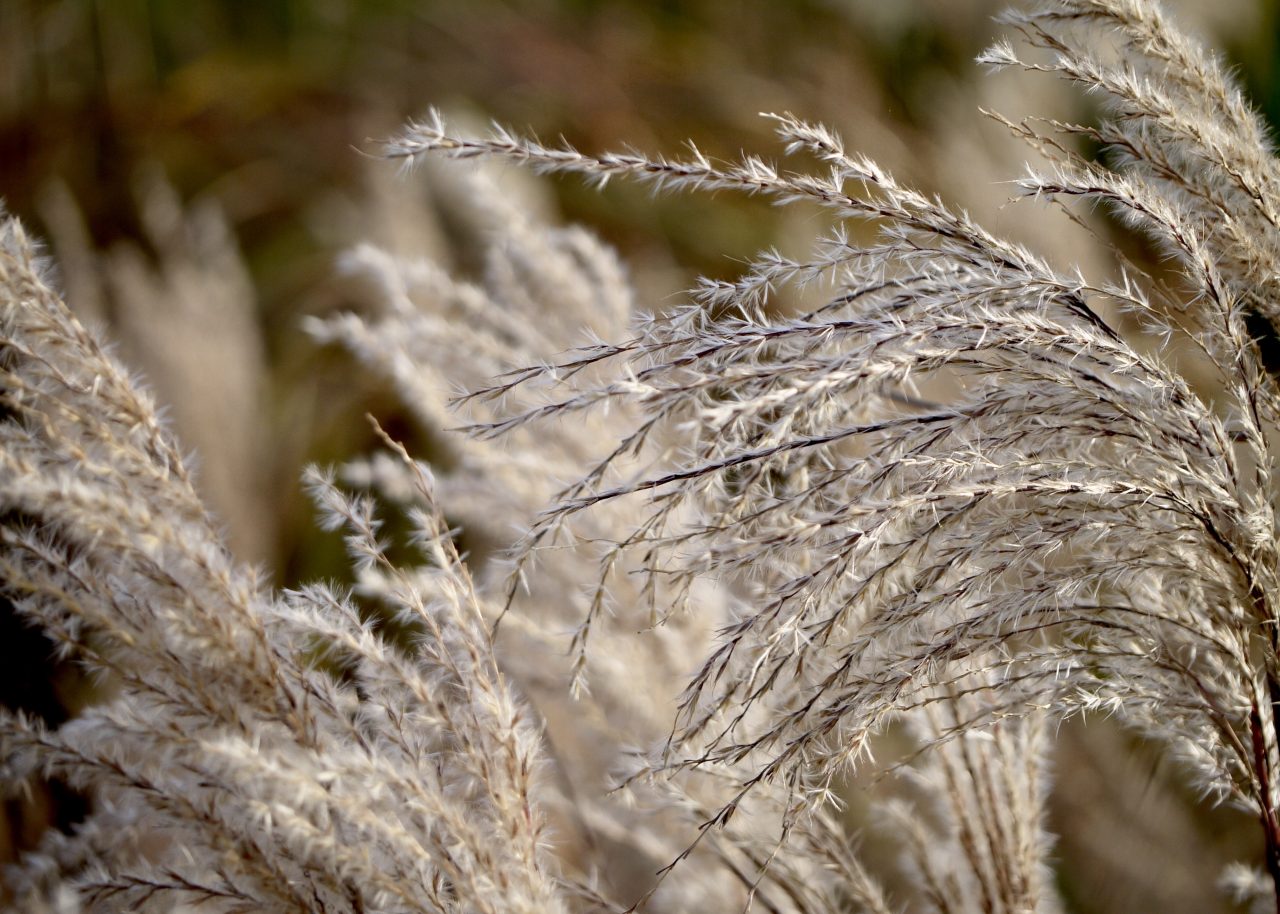
Miscanthus
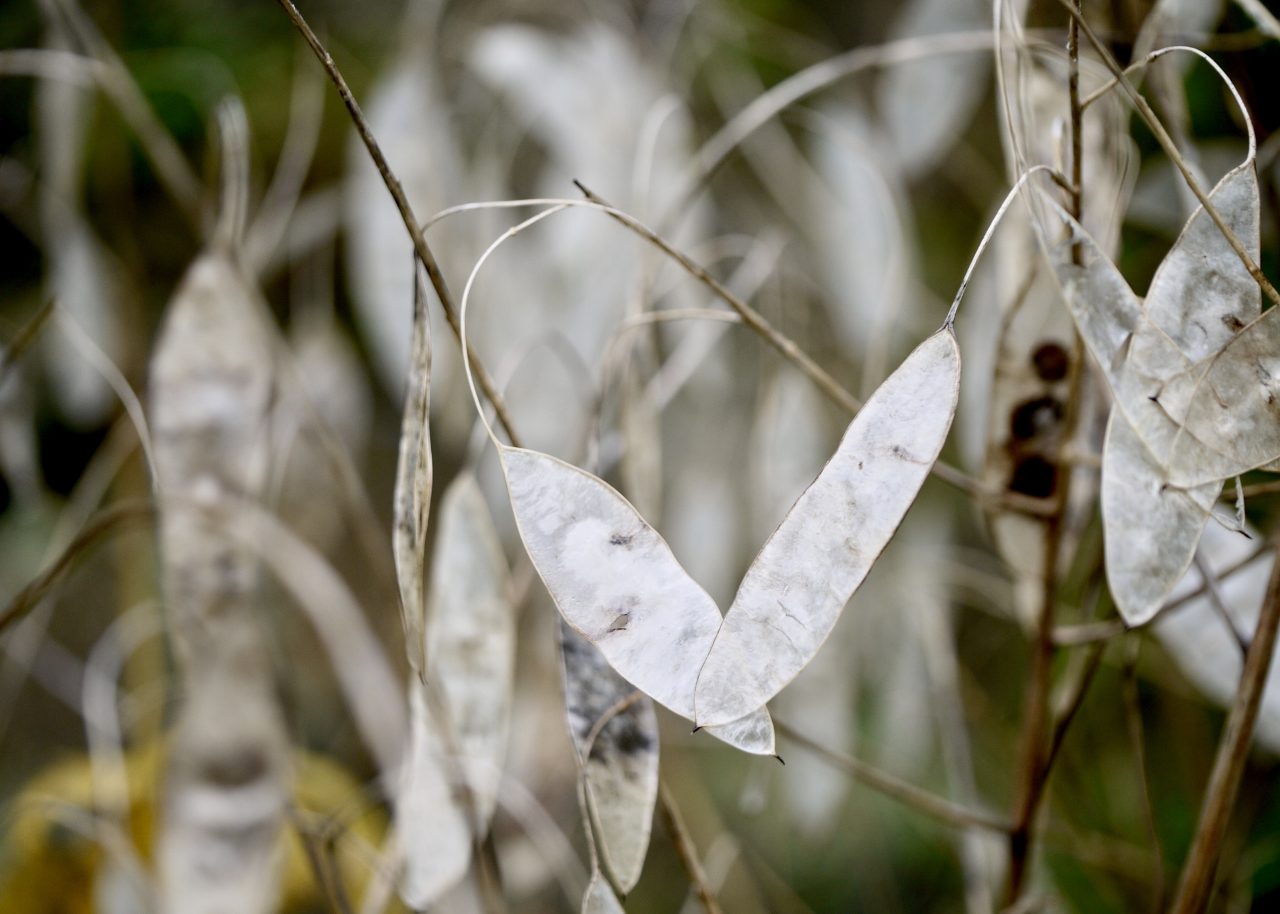
Lunaria rediviva
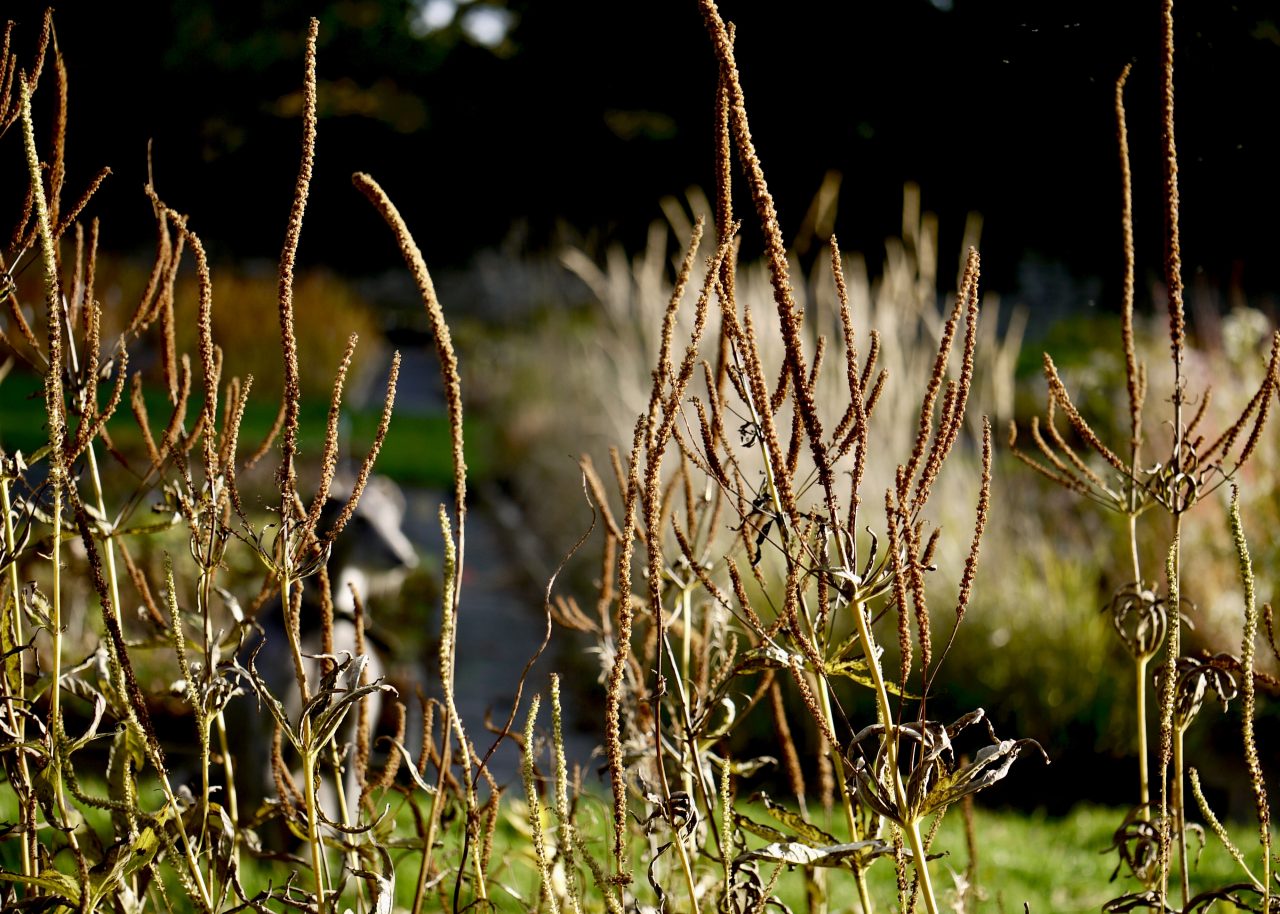
Veronicastrum
The key here is not to clear everything away at the first sign of a dropped leaf. Reject tidy. Leave everything in situ until you begin to see the new growth in spring, at which point you can remove what’s left. By doing so, you not only benefit your garden by retaining insect diversity, you also get to experience an entire season of interest you might otherwise miss with bare soil or “low maintenance” evergreen plantings. It is one of the unsung pleasures of gardening with good perennial species that they even look good “dead”, and watching the “slow crash” of late autumn can be one of the most pleasurable times in the garden.
